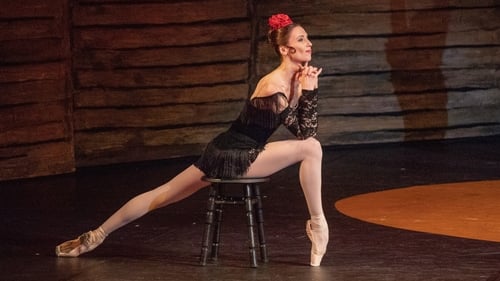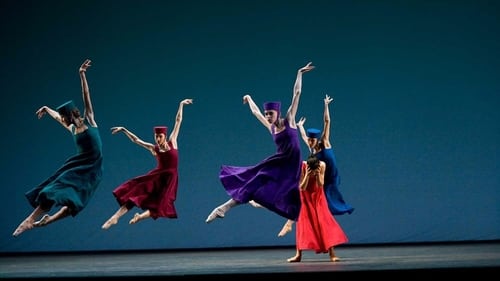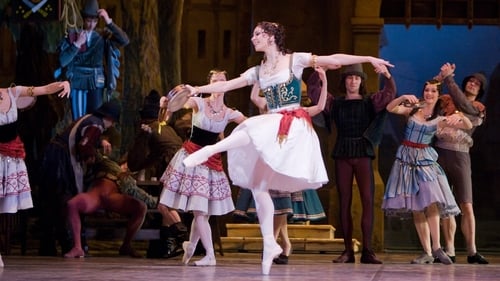Ekaterina Krysanova
出生 : 1985-03-22, Moscow, Russia
略歴
Ekaterina Krysanova is a Russian principal dancer of Bolshoi Ballet.

Juliet
The Bolshoi presents the famous star-crossed lovers from Shakespeare’s most tragic love story set to Prokofiev’s cinematic score.

The Ballerina
Carmen: Impetuous Carmen seduces Don José in order to convince him to let her out of jail. Once outside, she thinks she’s finally free before realizing that she’s in fact prisoner of a love triangle: she wants to be with the famous Torero Escamillo, but she can’t make Don José go away. Petruska: At Saint-Petersburg’s carnival, three puppets are playing the same role over and over: the unhappy lover Petrushka, the coquette and a Moor. Fed up with this endless part that never goes well for him, Petrushka attacks his rival and flees from the puppets theater. Carmen Suite, staged by Alberto Alonso, is a one act ballet about a passionate, free-spirited woman caught in a love triangle. Stanislavsky’s Petrushka, choreographed by Edward Clug, encapsulates the story of a puppet that came to life, burdened by the human emotions of love, jealousy, and rage. Both stories envelop the characters which refuse to abide by the rules, to whom even the thought of submission is repulsive.

Couple in Red
For one evening, the Bolshoi takes on a new challenge with audacity in The Cage by Jerome Robbins, Harald Lander’s Études and Alexei Ratmansky’s Russian Seasons.

Lyushka
In the 1920’s, The Golden Age cabaret is a favorite nightly haunt. The young fisherman Boris falls in love with Rita. He follows her to the cabaret and realizes that she is the beautiful dancer “Mademoiselle Margot,” but also the love interest of the local gangster Yashka. With its jazzy score by Dmitri Shostakovich and its music-hall atmosphere featuring beautiful tangos, The Golden Age is a refreshing and colorful dive into the roaring 20’s. A historic ballet that can be seen only at the Bolshoi! Captured live on Oct 16, 2016.

Kitri / Dulcinea
Inspired by heroic stories of brave knights, Don Quixote of La Mancha and his faithful servant Sancho Panza set out on an adventure to meet his ideal woman, Dulcinea. Cervantes’ hero comes to life in the Bolshoi's critically acclaimed staging of this exalting performance. With panache and sparkling technique, principal dancers Ekaterina Krysanova and Semyon Chudin lead the spectacular cast of toreadors, flamenco dancers, gypsies, and dryads in virtuosic dancing that is quintessential Bolshoi. Captured live on April 10, 2016

Rubies (Leading couple)
George Balanchine's jewel-themed triptych, strikingly choreographed to the music of Faure, Stravinsky and Tchaikovsky. This three act masterpiece is renowned as the world's first full-length abstract ballet. The Russian-born co-founder of the New York City Ballet, Balanchine was inspired by the artistry of jewellery designer Claude Arpels to create a trio of distinct movements revealing the essence of each precious stone. Each part also evokes three different cities: Paris, New York and St. Petersburg. 'Emeralds' was conceived as a tribute to the French romantic school, with music by Gabriel Faure. The fiery and energetic 'Rubies' taps into the rich tradition of Broadway musicals, with music by Stravinsky. 'Diamonds' honours the grandeur of Imperial Russia and the Maryinsky Theater, choreographed to the music of Tchaikovsky. With its jewel-like costumes, this is a celebration of the influences on the choreographer who was described as the father of American ballet.

Slyph
On his wedding day, the young Scotsman James is awakened with a kiss from an ethereal winged creature, a Sylph. Entranced by her beauty, James risks everything to pursue an unattainable love. La Sylphide is one of the world’s oldest surviving ballets, and a treasure in Danish ballet master August Bournonville’s style. Staged for the Bolshoi by Bournonville expert Johan Kobborg, this production is the ultimate romantic masterpiece. Captured live from the Bolshoi Theater in Moscow.

Fleur de Lys, Phoebus's fiancee
La Esmeralda is a ballet in three acts and five scenes, inspired by the novel Notre-Dame de Paris by Victor Hugo, originally choreographed by Jules Perrot to music by Cesare Pugni, with sets by William Grieve and costumes by Mme. Copère.






